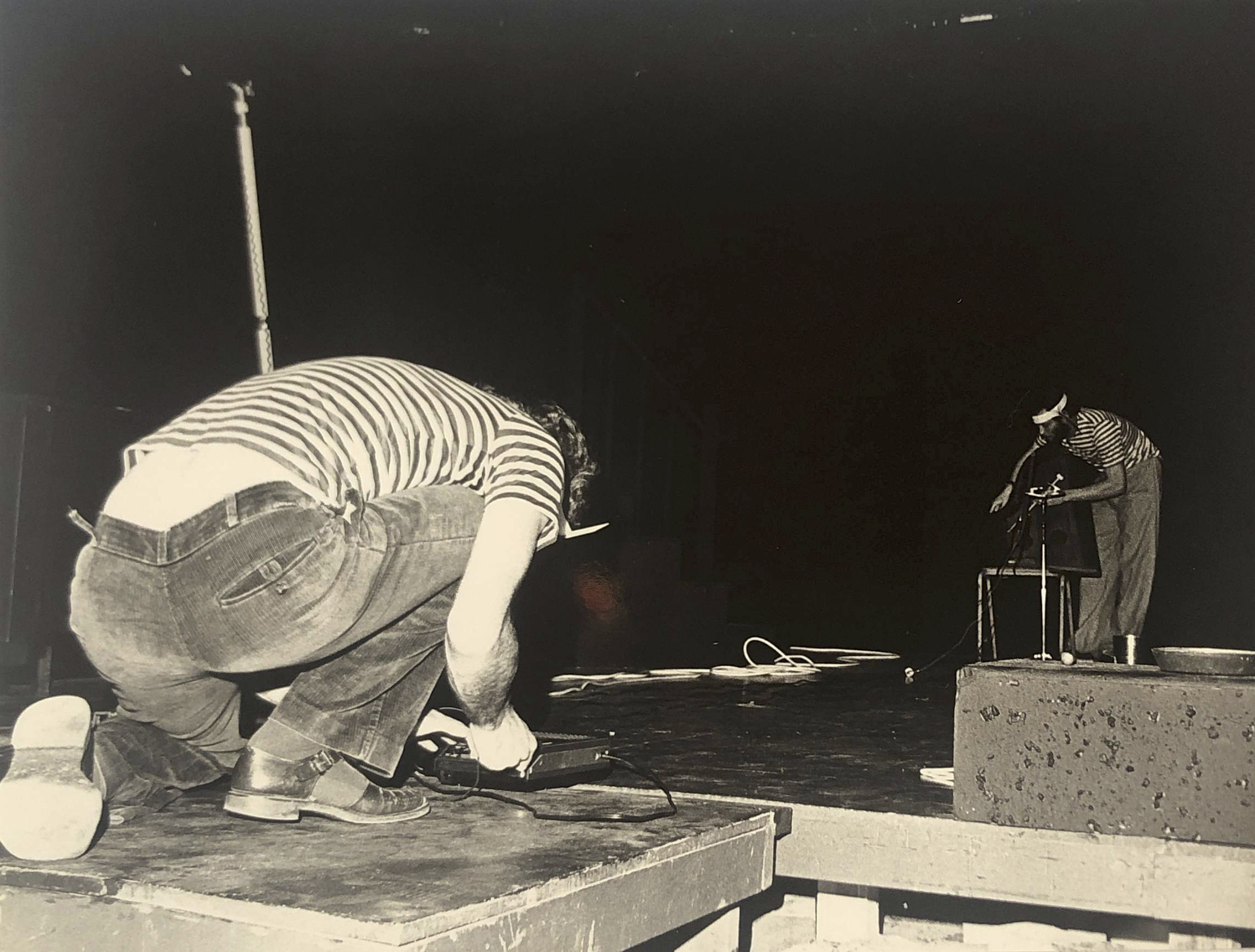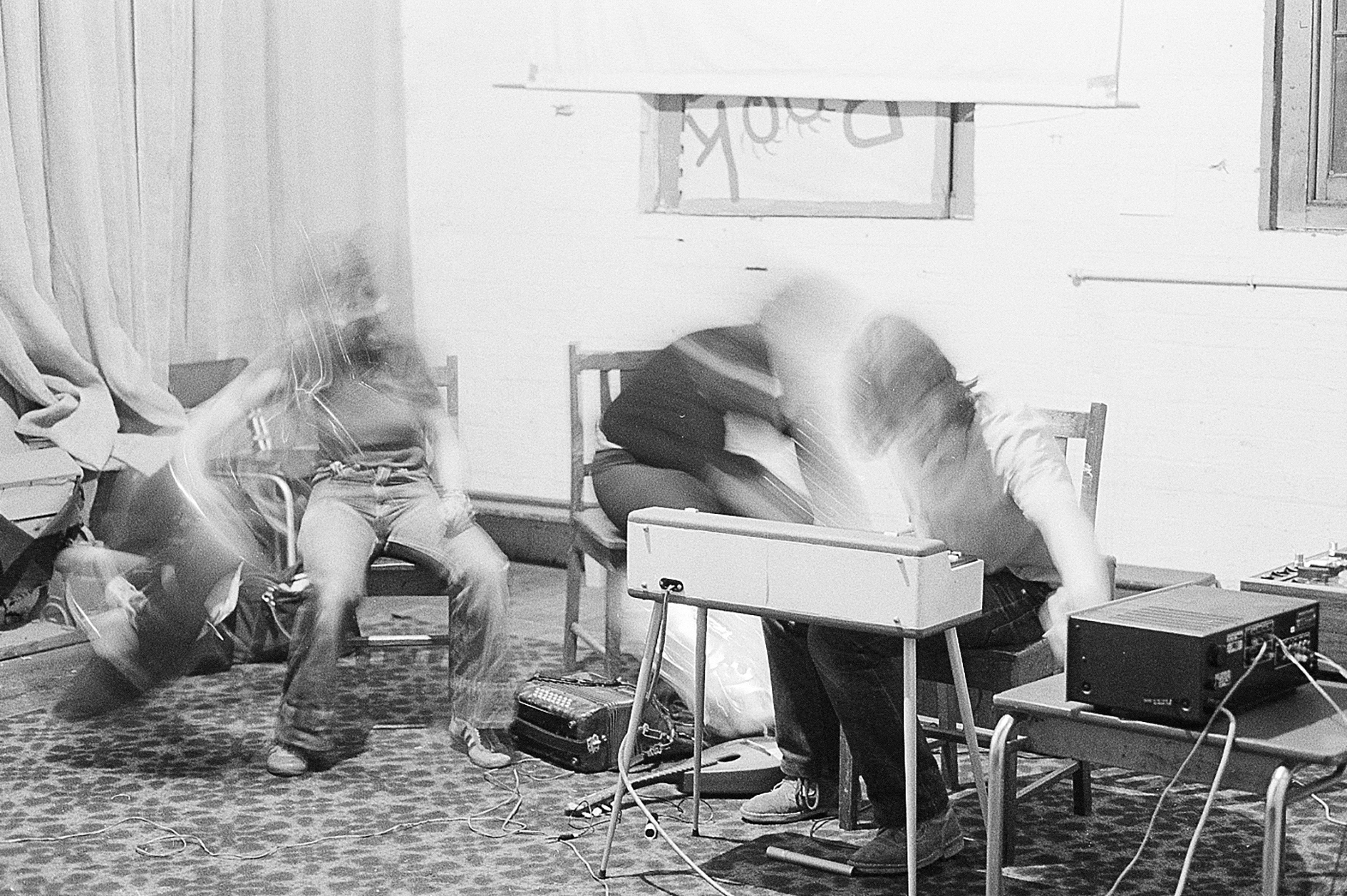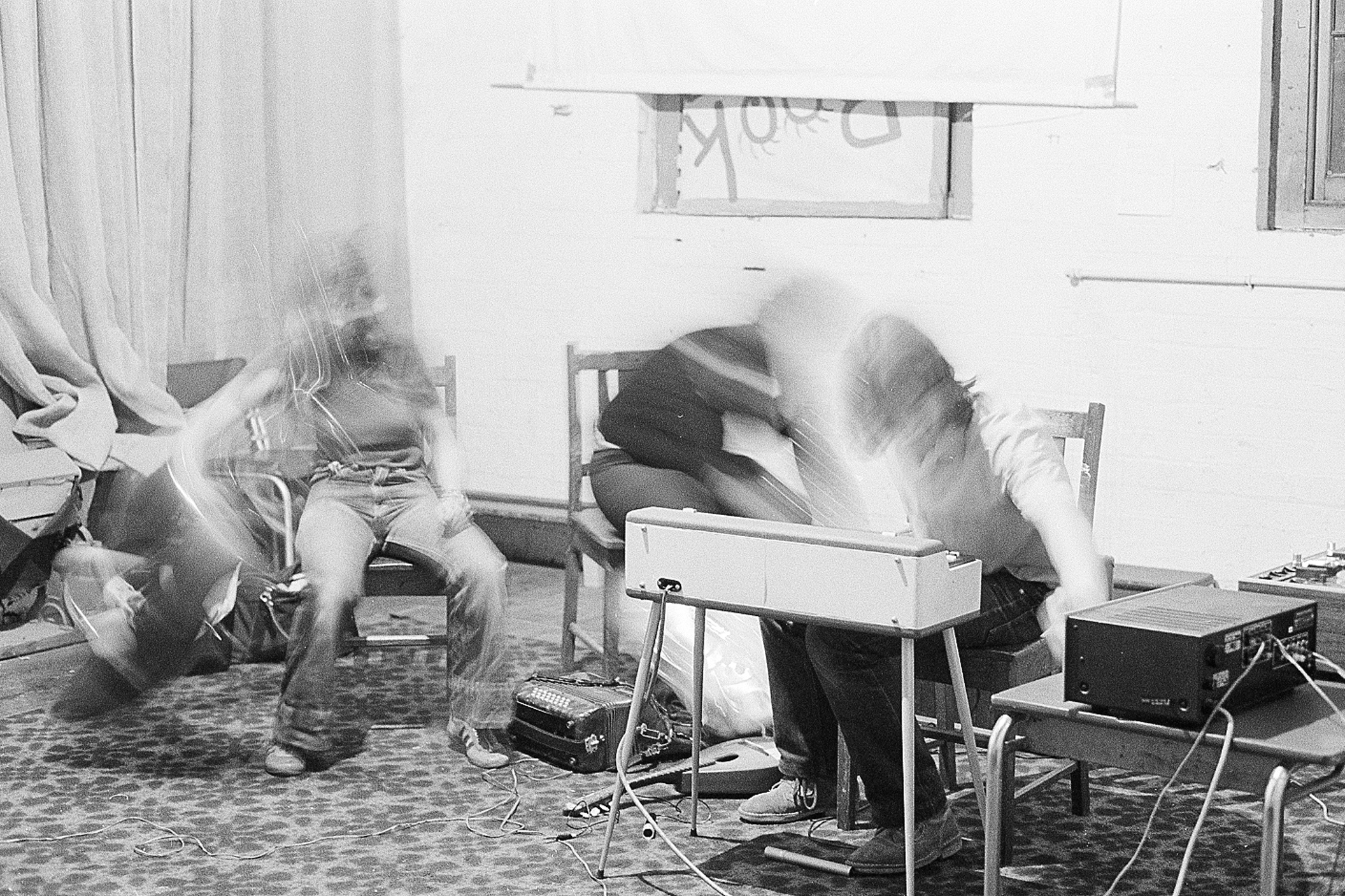At CHCMC
an Australian experimental
aesthetic emerged ...

Whether it was a coincidence or shared circumstances, the Clifton Hill Community Music Centre (CHCMC) emerged just as punk’s ‘just do it’ attitude coupled with emerging postmodern sensibilities, that caused art makers to coalesce in spaces that ignored the mainstream’s own alternative venues. Although CHCMC began as a community-oriented music venue, it soon gave way to new creative, political, and philosophical pathways that artists developed and explored during its five or so years of activity. I hope that this site will be used by both researchers and casual listeners to unpack specific works, potentially revealing their significance to experimental art practice in Australia.
In the late 1970s and early 1980s, a notable shift occurred as institutionalised culture began to lose its dominant grip while universities underwent corporatisation. Concurrently, popular culture, once looked down upon within the arts, was gaining a new legitimacy, recognised as a entangled rich field to explore. For some of us, somewhat unskilled and disillusioned with mainstream music practices, a creative gap opened up that we could fill by exploring music-making, uncovering novel concepts, and experimenting with new methods that embraced our varying levels of competence.

Melbourne is a big music town, and back in the late ’70s and early ’80s, CHCMC emerged as a space on the margins of the mainstream where experiments and shifts in cultural discourse played out, both performatively and audibly, to a small but growing audience. The Centre provided a safe space for emerging artists and their temporal art-making that didn’t fit commercial and academic expectations.
Artworks performed at CHCMC were wide ranging in scope, primarily involving music, but also performance, film, video and installation. These works de-emphasised traditional ideals of craft, expression and musicianship; moreover the artworks often critically commented on the dominant channels of production and cultural framings that were seen as pervasive in mainstream culture.
It could be argued that at CHCMC, an Australian experimental aesthetic emerged—one that ceased to merely replicate American and European ideas and trends. Instead, expressive forms began to reflect local experiences and themes, and had room for different approaches that included for some artists the pursuit of modernist counter-culture methods, while at the same time there were performances that deconstructed what some artists saw as pervasive modernist tropes.
Additionally, there were explorations of broader topics primarily discovered, articulated, and expressed through music, sound, and moving images rather than conveyed through written texts or curatorial frameworks. This included political and Indigenous themes—albeit from colonial-settler perspectives—as seen in the works of Ron Nagorcka and IDA. One curiosity for me, listening back to the archive, is how the broad Australian accent became very prominent. Exemplified by figures like Chris Mann, Ernie Althoff, Ralph Traviato, Adrian Martin, and others, this, at the time, became a fresh, non-academic sounding personal voice of liberation and expression. Spoken word still had a role to play. Warren Burt, Ernie Althoff, and Chris Mann often spoke at length about their works, prior as part of their performances, and Tsk Tsk Tsk photocopied essays to accompany their performances. But the music always came first. Following the performances, appraisals and critiques would often take place around the large silver tea urn.
As I now see it, CHCMC was a site where postmodernism 1 emerged in Australian art practice, although none of us were familiar with the term at that time. Initially evident among younger performers, including my own generation, this emergence involved both intuitive and deliberate deconstructions of modernist artistic and cultural methods and aesthetics, occasionally challenging the approaches of older CHCMC artists who’s creative pathways were informed by a counter-culture practice that were informed more strongly by modernist methods. Revisiting all the works within this archive today, I find them all intriguing, making it challenging to distinguish between these two creative philosophies, plus, I recognise influences in my own music from older composers like Warren Burt. But I feel it is still worth acknowledging that different creative ontologies, rubbed up against each other at CHCMC and created some creative friction.
My memories of this time also include non-sonic aspects of CHCMC’s creative milieu, which were still important: what we spoke about, how different people dressed, and all the different styles, methods and interests we all brought to CHCMC.
And so, for the keen listener, these recordings capture a dialectic of aesthetics, derived through modern and postmodern creative methods and through framings that were variously expressed through the music, performance, film and video. For example, the slightly older composers tended to experiment with inner musical structures and processes, while us younger composers concerned themselves with external structures, such musical context and the spectacle of performance.
It was a busy time. New works were being created each week, often in response to what other artists had presented the week before. Themes and ideas were explored directly through the act of making and presenting music, films and performance, with discourses that reflected certain philosophical precedents at the time – Marxism, the French New Wave, semiotics, structuralism. Some artists referenced contemporary American thinkers or experimented with novel musical and sonic concepts and structures, uncovering new aesthetic outcomes. For example, there was the use of multiple cassette recorders by some artists to layer up sounds in a process that gradually transformed simple recorded utterances into dense, distorted and evocative soundscape (Graeme Davis, Plastic Platypus, Ernie Althoff), or the deployment of novel tunings and pitch sets (Warren Burt). Some performers applied film theory that, at the time, was being being taught at La Trobe University and at Melbourne State College (Phillip Brophy, Adrian Martin, Robert Goodge Goodge, David Chesworth, Rolando Caputo). Other performer were influenced directly by the artists who performing before them at CHCMC.
All this was taking place within a world that was still analogue, where tapes took time to rewind and where musical works and performances often emerged slowly over long timescales, and where cheap super-8 film’s grainy chemically derived images evoked a blurry aesthetic that now appears so quaint and old. Sound Art hadn’t yet emerged as a term or a distinct discipline. There was no internet, mobile phones, nor social media to disseminate what was taking place at CHCMC. Instead, the mainstream and alternative rock press maintained its full control, while public radio stations were just getting a foothold. Some journalists harboured suspicions about CHCMC’s off the grid activities: its motives and critical attitudes. Amongst all this, there was a growing awareness that this world and creative milieu would soon be swamped by the incoming tidal wave of digital technology. It was difficult then to picture how this would affect us and how it would forever transform the fidelity of the mediascape, our methods and our creative pathways.
This rare archive of a nascent experimental music scene was recorded binaurally on cassette by Ernie Althoff – himself a regular performer at CHCMC. It is not a complete record, rather, it reflects Ernie’s personal choices, after-all, no one asked him to make these recordings; he simply took it upon himself to attend performances and make them. Ernie’s own creative work is therefore well represented in these tapes.
Ernie’s cassettes had been silently resting on a shelf for over 40 years until recently when they were transferred and organized into a digital archive for this site The cassette transfers were made by John Campbell who was also a performer at CHCMC (and who initially uncovered the availability of the Organ Factory and its potential as a community space). I have done some restoration work on the recordings including compiling recordings of single events that Ernie spread across several tapes, filling in any available space.
Some artists who were prolific at this time are not well represented in the archive, as they mainly performed electronic music that was considered to be already documented on tape. Warren Burt, a hugely significant artist during this time has relatively few recordings made at Clifton Hill. His prolific output was at the time mainly video and film-based. We have included a separate archive of some of Warren’s work from the 70s that also includes undated CHCMC performances that he recorded. This can be found under the ‘Other Recordings’ link.
This site also includes the distinctive performance season posters designed by Philip Brophy and Ernie Althoff and copies of the New Music magazine (1978–81) edited and published by Philip Brophy and myself that contain reviews of performances followed by discussions with the artists who respond to the reviews. Also included are three earlier publications of The New Music Newspaper (1976–77) edited and published by Warren Burt and Les Gilbert. You will also find photos and ephemera associated with CHCMC. There weren’t many photographs taken at CHCMC, as it was considered indulgent by some of us to think that one’s contribution should be preserved beyond the performance. In retrospect we are thankful that some photos were taken and recording were made. We are fortunate that photographer and CHCMC performer Jane Joyce took a range of shots that now appear throughout the site, as did members of →↑→. Other photographs are being be added as they come to light.
CHCMC Performers are encouraged to send in information and clarifications and to flesh out their own biogs. If any of you have recordings of CHCMC performances that we have missed then please us know.
David Chesworth
-
Postmodernism as I define it here, was an intellectual stance or mode of discourse defined by a skepticism toward the grand narratives and ideologies of modernism, as well as opposition to epistemic certainty and the stability of meaning. ↩

















